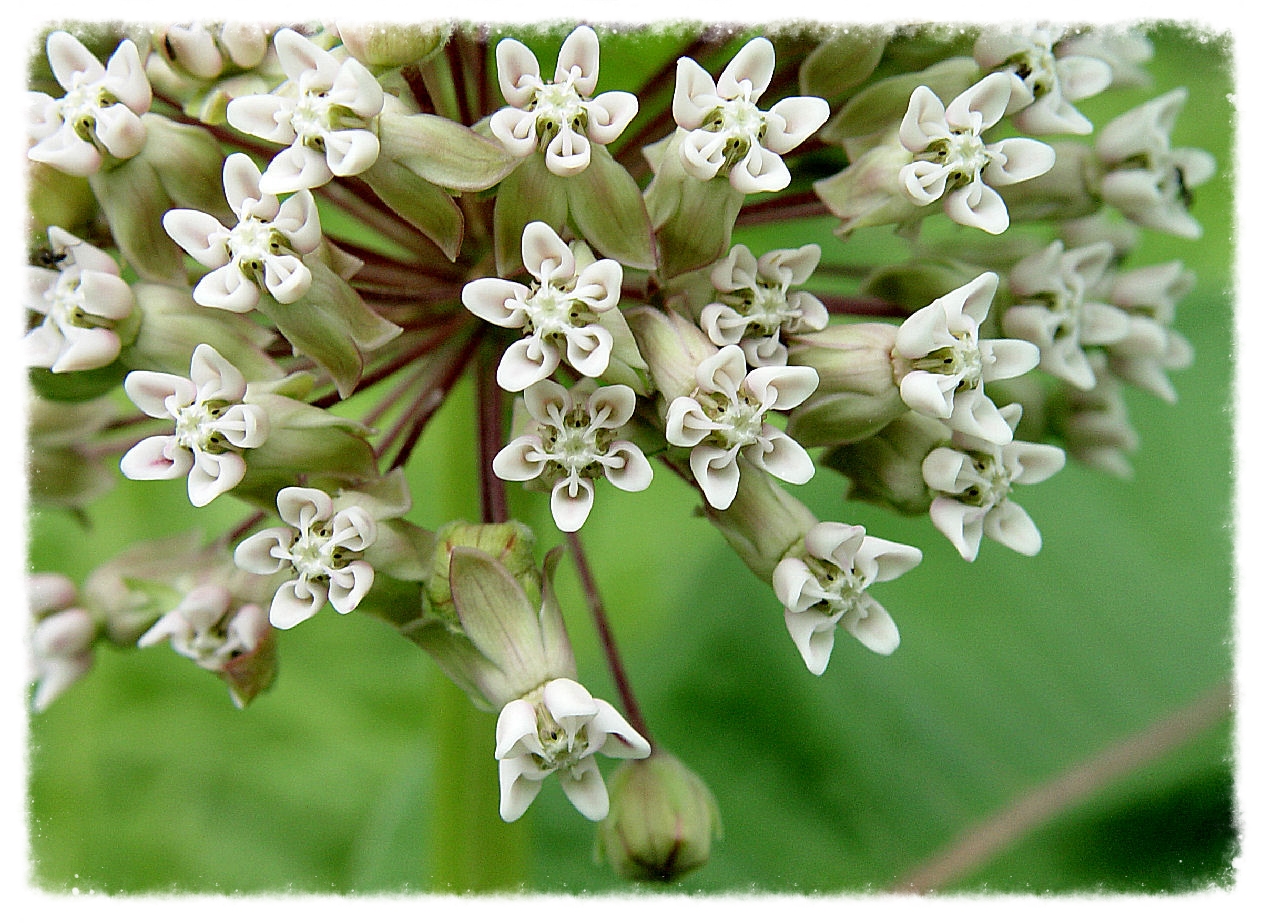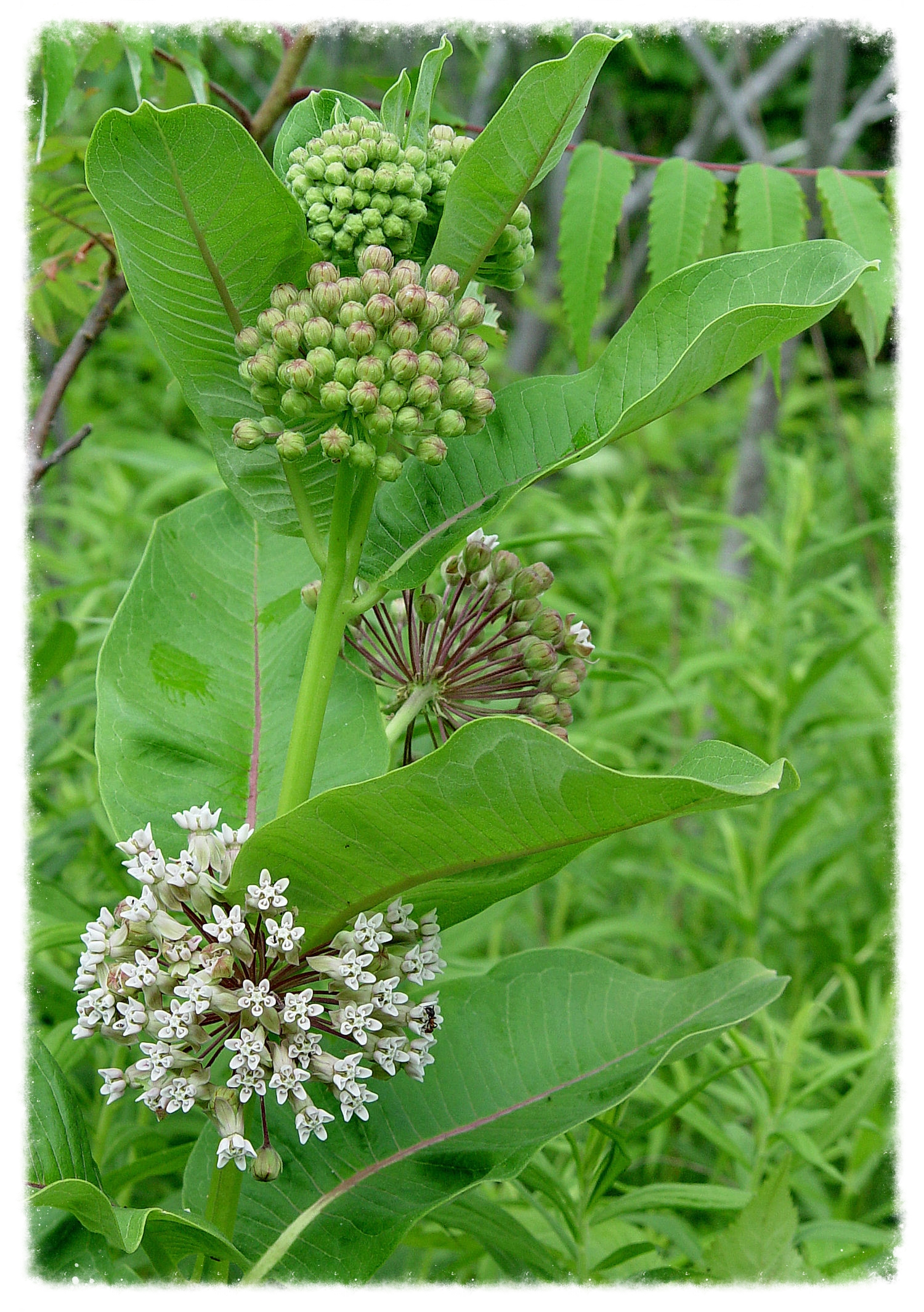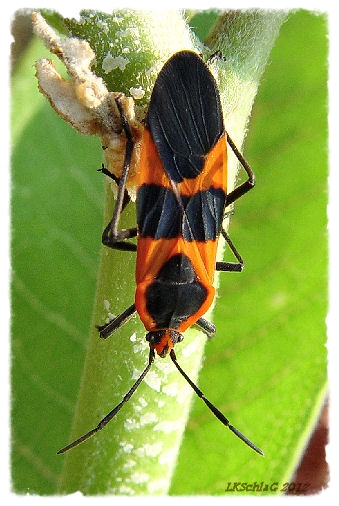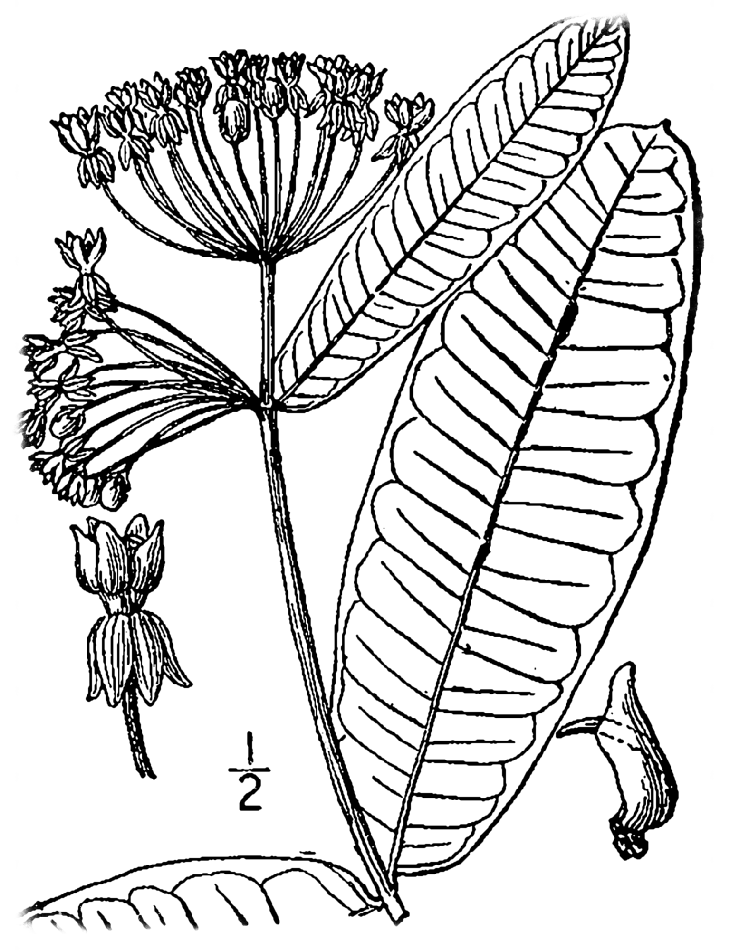Asclepias syriaca
English name(s):
Common Milkweed
Family: Asclepiadaceae
Description:
The succulent leaves and fragrant mauve-colored flowers, which delightfully perfume the air, provide sustenance for wildlife that seek its nectar, leaf, seed, and plant juices as well as those who seek these insect visitors themeselves. It is a host plant for the Monarch butterfly, Danaus plexippus.
Habitat:
fields and roadsides
Notes:
Linnaeus classified common milkweed, Asclepias syriaca, in 1753. However, the plant has been found referenced in historical publications as Asclepias cornuti.
cornuti = horned
Additional notes:
Monarch Migration News
✿ updates, first-hand accounts, and much more!!
photograph courtesy of Lisa K. SchlaG
Xerces Society:
Milkweed: A Conservation Practioner's Guide
USDA map: to view county distribution for Ohio, double click Ohio several times
Plant identification
The Ohio State University Herbarium:
Geauga County, 12 August 1978, collectors: George T. Jones & Mark Long voucher specimen
✿ view additional voucher specimens and related information
Newcomb's: Key Group no. 542, p. 264
Historical description: Naturalist F. Schuyler Mathews' description of common milkweed, Asclepias cornuti, in his book Familiar Flowers of Field and Garden, 1894.
Mrs. William Starr Dana's description of common milkweed, Asclepias cornuti, in her book How to Know the Wild Flowers, 1895. The scientific name Asclepias syriaca was used in the 1963 revised edition. Clarence J. Hylander writes in the preface of the 1963 revised edition, "... the nomenclature has had to be carefully revised to conform with the Eighth Edition (1950) of Gray's Manual of Botany. As a result, all common and scientific names have been checked and now agree with those used in recent flower field guides.", p. viii.
USDA-NRCS PLANTS Database / Britton, N.L., and A. Brown. 1913. An illustrated flora of the northern United States, Canada and the British Possessions. 3 vols. Charles Scribner's Sons, New York. Vol. 3: 30.
photograph courtesy of Lisa K. SchlaG
USDA-NRCS PLANTS Database / Britton, N.L., and A. Brown. 1913. An illustrated flora of the northern United States, Canada and the British Possessions. 3 vols. Charles Scribner's Sons, New York. Vol. 3: 28.
|
Milkweed Among Flowers and Trees with the Poets (1901), Ray Laurance
|
virtual herbarium sheet 000011
created by Lisa K. SchlaG, 22.vi.2014













